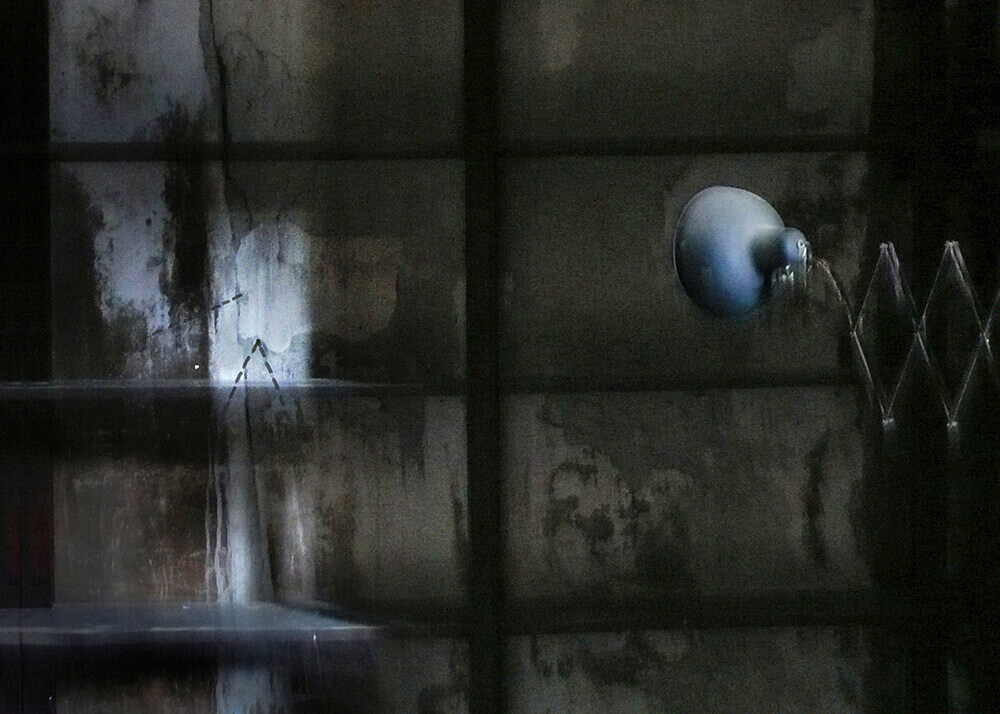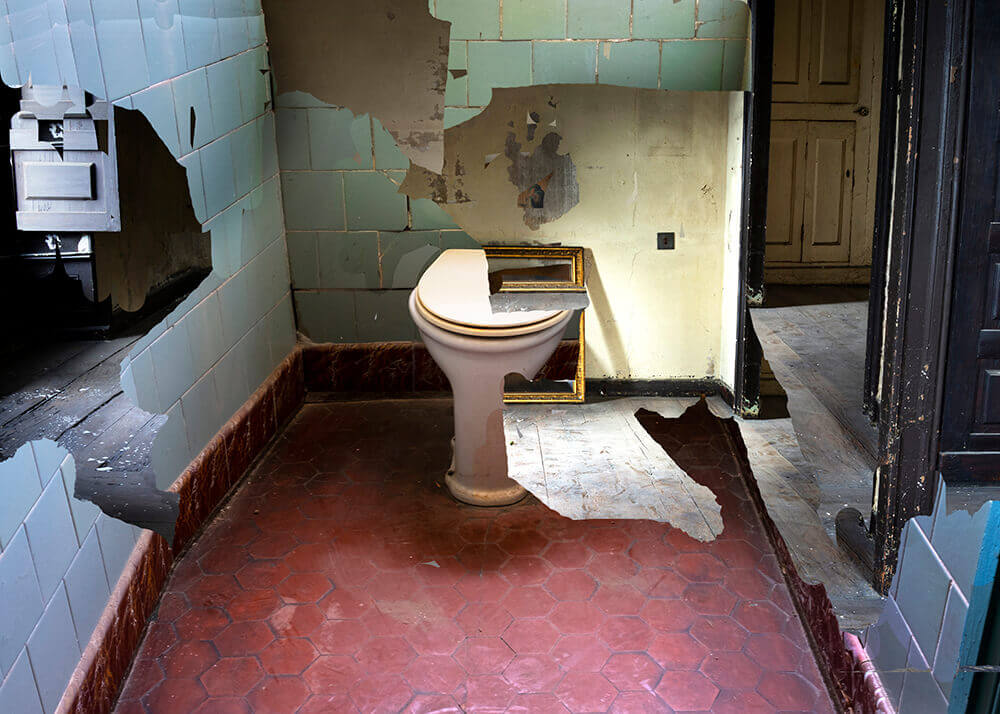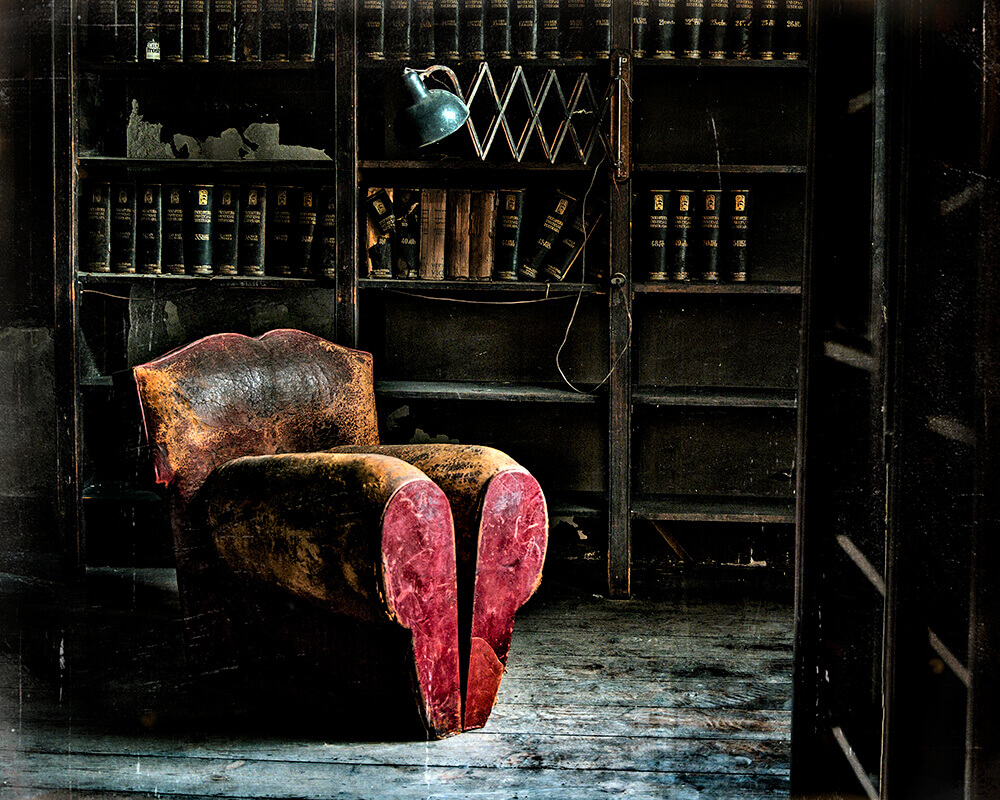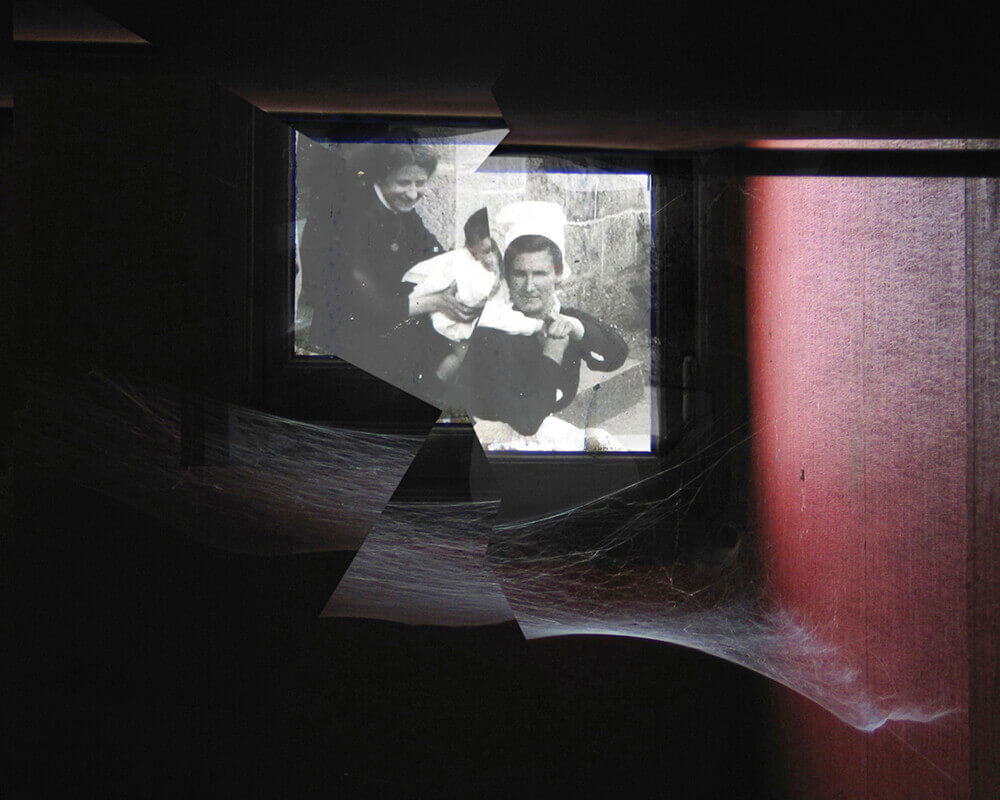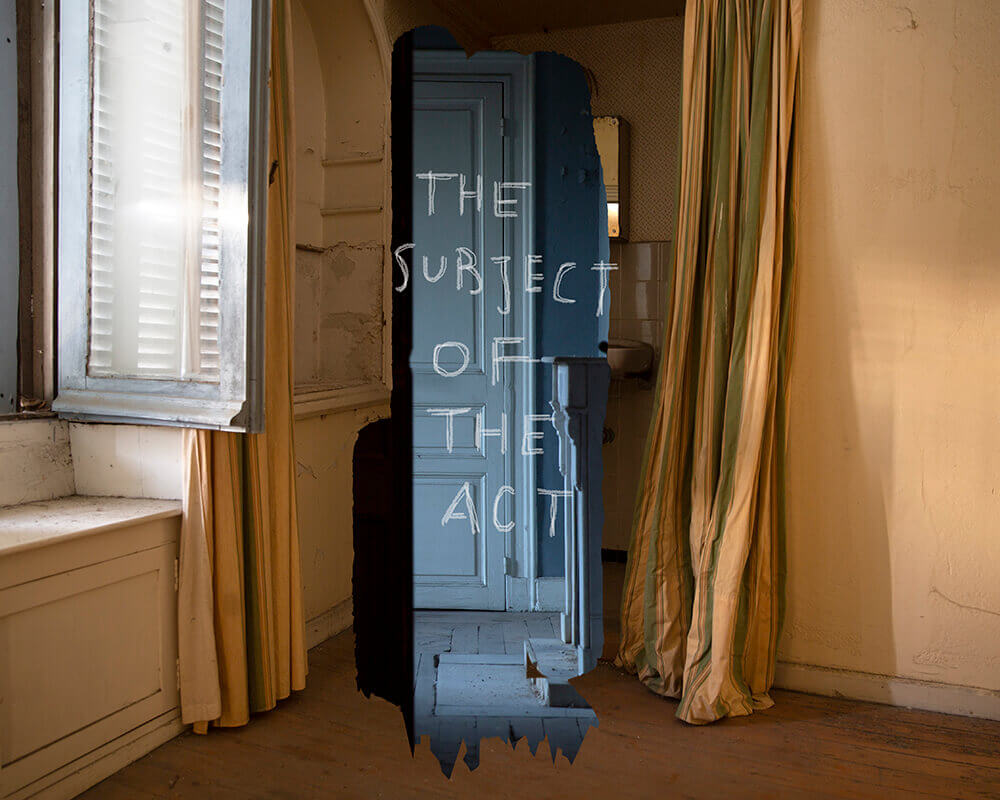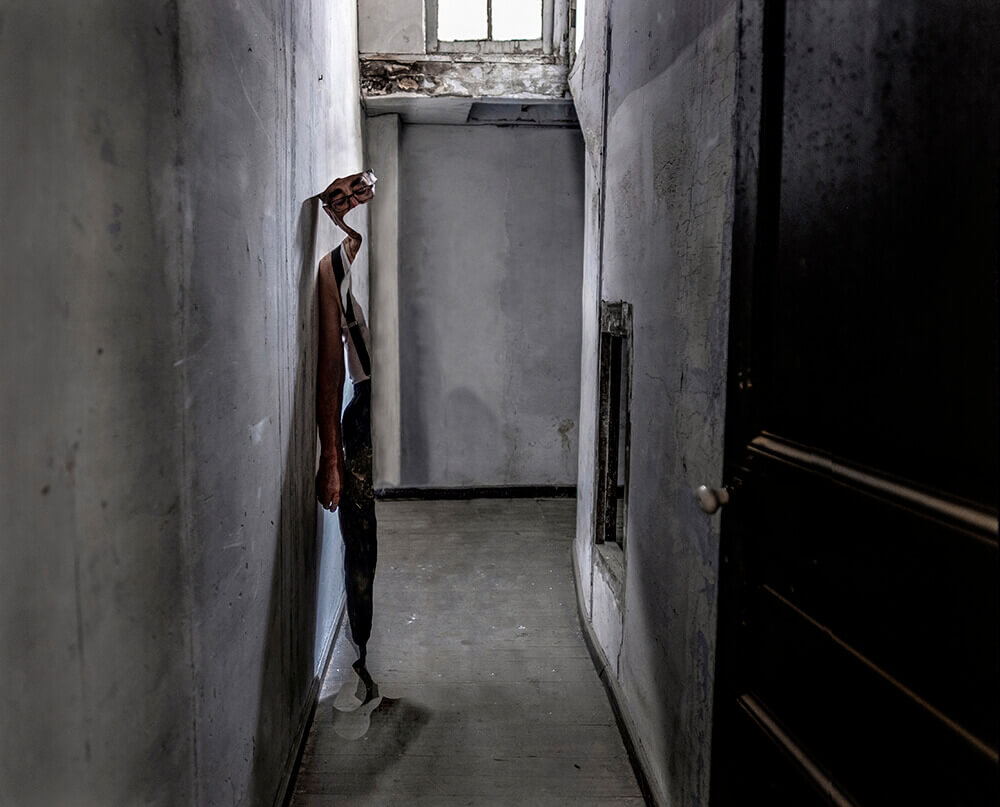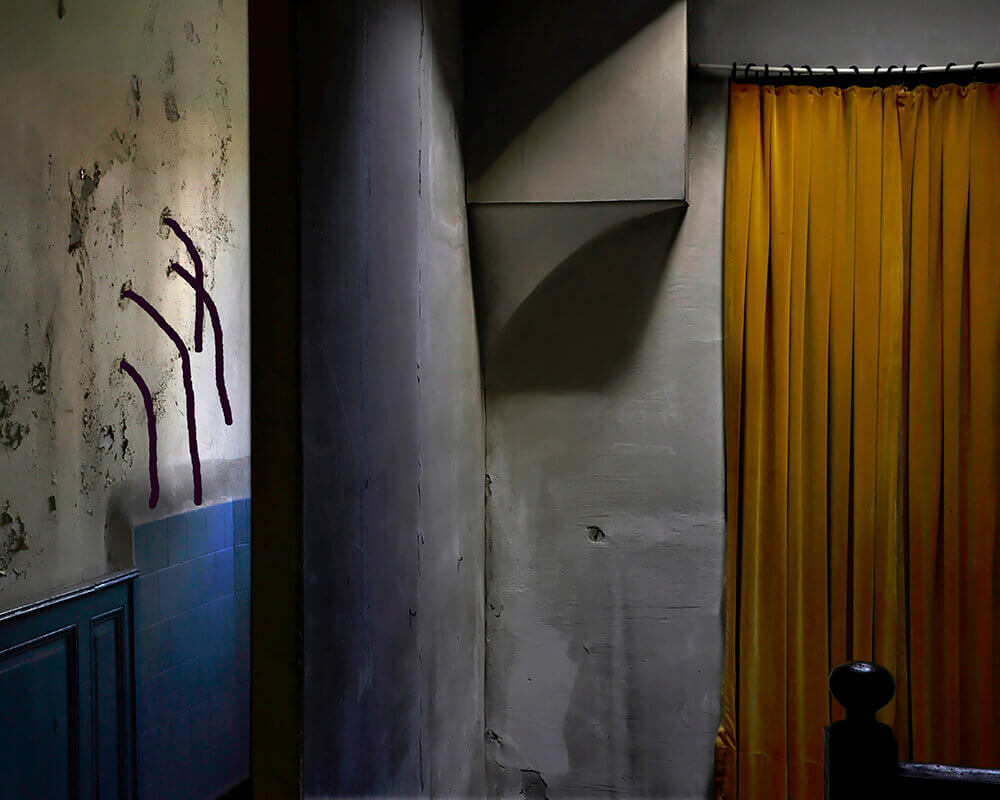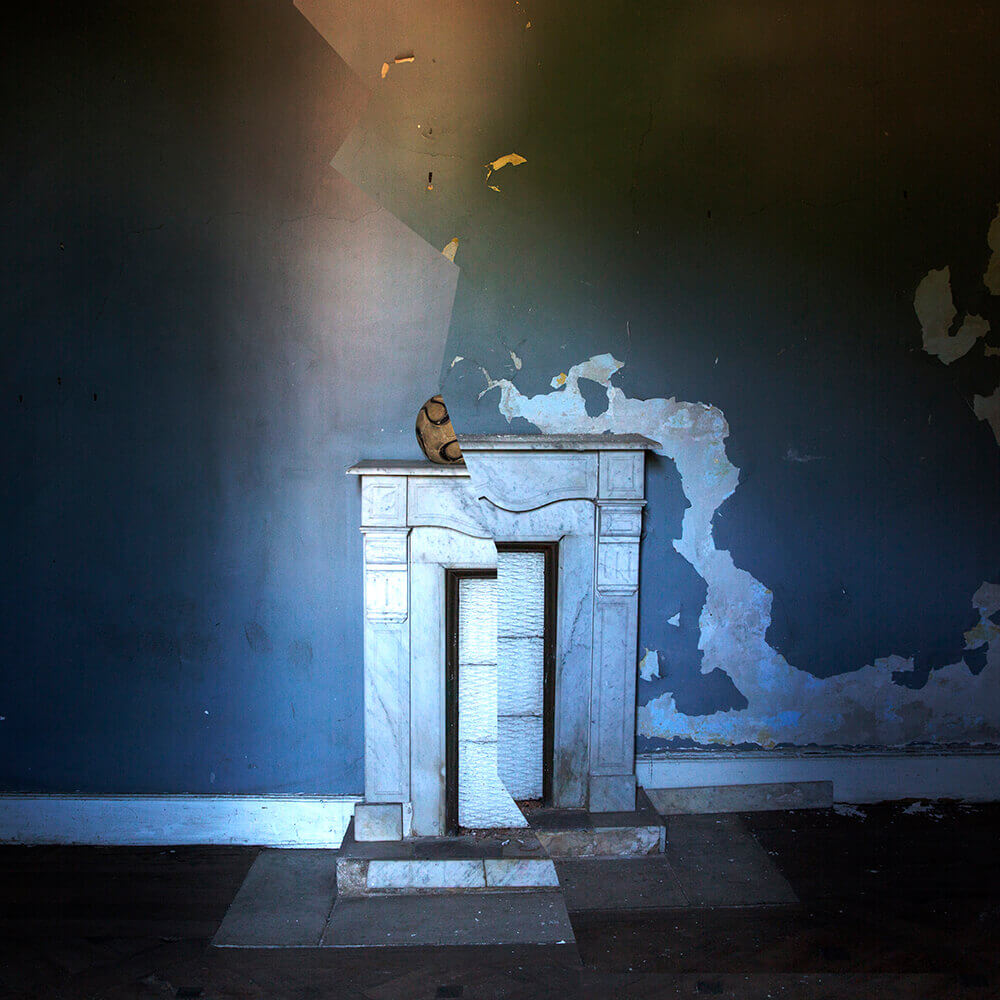Murguia is the house of my childhood where my family has lived for more than 800 years. I inherited Murguia from my grandfather, due to the premature death of my father. After the distribution of the inheritance among my family, I received the house naked, in a state of decline and without a single piece of furniture, photography or souvenir. I read the poem in prose No one lives anymore in the house of César Vallejo that inspired me to recompose the traces of past lives on the walls, ceilings, floors and in this way build an imaginary in my memory. Sometimes I put impossible furniture or museum paintings. Others I left the rooms empty, added brush strokes or assembled several photographic images.
José Mª de Orbe
No one lives in the house anymore
«- No one lives in the house anymore – you tell me -; all have gone. The living room, the bedroom, the patio, are deserted. No one remains any longer, since everyone has departed.
And I say to you: When someone leaves, someone remains. The point through which a man passed, is no longer empty. The only place that is empty, with human solitude, is that through which no man has passed. New houses are deader than old ones, for their walls are of stone or steel, but not of men. A house comes into the world, not when people finish building it, but when they begin to inhabit it. A house lives only off men, like a tomb. That is why there is an irresistible resemblance between a house and a tomb. Except that the house is nourished by the life of man, while the tomb is nourished by the death of man. That is why the first is standing, while the second is laid out.
Everyone has departed from the house, in reality, but all have remained in truth. And it is not their memory that remains, but they themselves. Nor is it that they remain in the house, but that they continue about the house. Functions and acts leave the house by train or by plane or on horseback, walking or crawling. What continues in the house is the organ, the agent in gerund and in circle. The steps have left, the kisses, the pardons, the crimes. What continues in the house are the foot, the lips, the eyes, the heart. Negations and affirmations, good and evil, have dispersed. What continues in the house, is the subject of the act».
César Vallejo
Murguia es la casa de mi infancia donde mi familia lleva más de 800 años viviendo. Heredé Murguia de mi abuelo, por la prematura muerte de mi padre. Tras el reparto de la herencia entre mi familia, recibí la casa desnuda, en estado de decadencia y sin un solo mueble, fotografía o recuerdo. Leí el poema en prosa No vive ya nadie en la casa de César Vallejo que me inspiró para recomponer los rastros de vidas pasadas en las paredes, los techos, los suelos y de esta forma construir un imaginario en mi memoria. Unas veces coloqué muebles imposibles o cuadros de museos. Otras dejé las estancias vacías, añadí trazos de pincel o ensamblé varias imágenes fotográficas.
José Mª de Orbe
No vive ya nadie en la casa
No vive ya nadie en la casa —me dices—; todos se han ido. La sala, el dormitorio, el patio, yacen despoblados. Nadie ya queda, pues que todos han partido.
Y yo te digo: Cuando alguien se va, alguien queda. El punto por donde pasó un hombre, ya no está solo. Únicamente está solo, de soledad humana, el lugar por donde ningún hombre ha pasado. Las casas nuevas están más muertas que las viejas, por que sus muros son de piedra o de acero, pero no de hombres. Una casa viene al mundo, no cuando la acaban de edificar, sino cuando empiezan a habitarla. Una casa vive únicamente de hombres, como una tumba. De aquí esa irresistible semejanza que hay entre una casa y una tumba. Sólo que la casa se nutre de la vida del hombre, mientras que la segunda está tendida.
Todos han partido de la casa, en realidad, pero todos se han quedado en verdad. Y no es el recuerdo de ellos lo que queda, sino ellos mismos. Y no es tampoco que ellos queden en la casa, sino que continúan por la casa. Las funciones y los actos se van de la casa en tren o en avión o a caballo, a pie o arrastrándose. Lo que continúa en la casa es el órgano, el agente en gerundio y en circulo. Los pasos se han ido, los besos, los perdones, los crímenes. Lo que continúa en la casa es el pie, los labios, los ojos, el corazón. Las negaciones y las afirmaciones, el bien y el mal, se han dispersado. Lo que continua en la casa, es el sujeto del acto.
César Vallejo



